The Tongass National Forest in the U.S. state of Alaska is a special place for conservation biologist Dominick DellaSala, even after decades of traveling the world to study temperate rainforests.
“The trees are enormous,” DellaSala, chief scientist at the Earth Island Institute’s World Heritage project, told Mongabay. “It’s like being in a cathedral. It’s an amazing place.”
Shag-barked yellow cedar (Callitropsis nootkatensis), mountain hemlock (Tsuga mertensiana), and Sitka spruce (Picea sitchensis) are but a few of the tree species that can grow for hundreds of years and that anchor a rich and enduring landscape in the Tongass. The august Sitka is the world’s largest spruce and can tack on a meter and a half (5 feet) a year during adolescence on its way to a height of nearly 100 m (330 ft).
Walking among the giants, bryophytes and lichens carpet the forest floor, and the ground is spongy underfoot, DellaSala says. Tongass National Forest spans 67,000 square kilometers (about 26,000 square miles) of southeastern Alaska. Around 60% of it is forested, most of which is old growth. It also holds 12% of the world’s temperate rainforest.
“You don’t see that in most places around the planet, let alone the temperate rainforest system,” DellaSala said. “It’s so unique on a global scale.”
DellaSala and his colleagues recently published a study revealing that the forests of the Tongass hold about a fifth of all the carbon in the entire United States National Forest system. That’s the equivalent of 1.5 times all the greenhouse gas emissions by the U.S. in 2019.
Their research came out April 13 in the journal Land.
The relatively untouched Tongass has long been known for the menagerie of North America’s charismatic wildlife that it hosts. Black bears (Ursus americanus), Sitka black-tailed deer (Odocolieus hemionus sitkensis), long a key source of food for the region’s Indigenous groups, and a threatened seabird called the marbled murrelet (Brachyramphus marmoratus) all call the Tongass home.
Its rivers and streams also nurture vibrant runs of six species of salmon and trout, attracting bald eagles (Haliaeetus leucocephalus) and brown bears (U. arctos) in unparalleled numbers. These runs also buttress the region’s productive fishing industry.

In 2006, a group of researchers calculated that the carbon held in the Tongass’s forests amounted to 8% of all the carbon in all the forests found in the United States outside of Alaska and Hawai‘i.
More than a decade later, DellaSala and his colleagues from the Woodwell Climate Research Center in Falmouth, Massachusetts, decided to recalculate the carbon content of the Tongass. They used tree cover data along with maps of productive forests, roadless areas and land use in the national forest. They also delved into historical records of timber harvests to understand how the heavy logging of the early 20th century may have impacted carbon stocks. The result was this latest paper in Land.
They found the Tongass holds 2.7 billion metric tons of carbon, very close to what the researchers had calculated in the 2006 study.

With this new study, DellaSala said they wanted to highlight how important the Tongass is to the National Forest system, which is managed by the U.S. Department of Agriculture. The team’s analysis revealed that 20% of the system’s carbon is tied up in the Tongass’s rich soils, vegetation and especially the trees. At the same time, it accounts for only 9% of the system’s land area.
What’s more, the density of carbon stored in the forest is superlative, reaching more than 800 metric tons per hectare in some spots.
“There are few places in the world that can exceed what’s on the Tongass,” DellaSala said.

But today, the Tongass sits at the center of a decades-long debate over whether its old-growth forests should be protected from logging and roads. In 2001, then-president Bill Clinton signed the National Roadless Conservation Rule into law. Included were vast tracts of unbroken wilderness in the Tongass. But since that time, the rule’s protections of roadless areas in the Tongass have been repeatedly challenged in the courts. Republican presidents George W. Bush and Donald Trump used executive orders to undo those protections, arguing that the forests are important for the provision of timber and the industry jobs that go along with it.
Despite the challenges, today more than 36,000 km2 (14,000 mi2) of the Tongass have no roads whatsoever. That adds up to 16% of the country’s roadless areas, DellaSala said, “which is enormous.”
Last year, President Joe Biden’s administration signaled that it wanted to lock the roadless protections in the Tongass into law so that they can’t be stripped away, even if a less conservation-minded president takes office.
“Restoring the Tongass’ roadless protections supports the advancement of economic, ecologic and cultural sustainability in Southeast Alaska in a manner that is guided by local voices,” Secretary of Agriculture Tom Vilsack said in a November 2021 statement.
In temperate rainforests like the Tongass, DellaSala said, roads often mean more logging and possibly mining in previously untouched areas. Other research shows that the construction of a road can harm plant and animal life, tinker with the flow and quality of water, and undermine carbon sequestration up to a distance of 1 km (0.6 mi) from either side of the road.
The Biden administration’s efforts have raised the ire of supporters of Alaska’s logging industry.
“This is a frustrating decision that will impact not just timber, but a wide range of industries in Southeast Alaska — tourism, recreation, mining, energy development, and transportation alike — so we will fight it,” Lisa Murkowski, a Republican senator who represents Alaska, said in a statement in November. “It is needless, given the level of protections that already exist for the Tongass.”
But many conservationists and scientists disagree. Further aggravating industry supporters, the Biden administration is also considering a ban on commercial logging of the Tongass’s old-growth forests.

That’s important because earlier research shows that these forests won’t be as affected by climate change as those further inland, DellaSala said. In addition to locking away carbon more securely, they may also provide a refuge for other species as temperatures increase.
“If you save the old growth, if you save the roadless areas,” DellaSala said, “you’ve got the best shot at an adaptation strategy as the rest of the region deals with more of the blow of climate impacts.”
Now, conservation groups are stepping up campaigns to see the roadless protections finalized.
“This is the first step toward saving America’s last big rainforest, which is vital and precious to Alaska Native tribes, fish, and wildlife,” Niel Lawrence, Alaska director for the environmental advocacy NGO National Resources Defense Council, said in a statement in June 2021. “We’re counting on the Biden team to follow through and restore full protection to Tongass wildlands. That would show true leadership on climate and our public lands heritage.”
But DellaSala said protections shouldn’t stop with just the Tongass’s old-growth forests.
“We’ve got places like the northeastern United States where the forest are 100 years old, and they’re approaching old growth,” DellaSala said. These mature forests should be saved, he said. The study on the Tongass shows the value of long-standing forests as repositories of climate-warming carbon, and they support unique and complex ecosystems.
Plus, by DellaSala’s calculations, the U.S. Forest Service can meet its timber output targets by shifting the logging focus to “young” growth stands that are typically between 55 and 65 years old and have sprouted in previously logged areas.
“We found that there’s more than enough young growth out there,” he said. “There is no reason for logging old growth.”
DellaSala said mills would likely have to invest in new equipment that can handle smaller-diameter, young-growth logs. But protections on both old-growth and mature forests in the U.S. would set an “example of how we can transition to a more ecologically sustainable footprint on the landscape while there’s still time,” he added. “There are so few examples where we still have that opportunity around the world.”

To DellaSala, nowhere is that opportunity more apparent than in the Tongass, the forest that has served as a touchstone throughout his career.
“I keep coming back to the Tongass because it’s just a remarkable place that needs to be saved,” he said. “It’s the quintessential crown jewel in the National Forest system.”
CITATIONS
DellaSala, D., Brandt, P., Koopman, M., Leonard, J., Meisch, C., Herzog, P., … Von Wehrden, H. (2018). Climate change may trigger broad shifts in North America’s Pacific coastal rainforests. Encyclopedia of the Anthropocene, 233-244. doi:10.1016/b978-0-12-809665-9.09367-8
DellaSala, D. A., Gorelik, S. R., & Walker, W. S. (2022). The Tongass National Forest, Southeast Alaska, USA: A natural climate solution of global significance. Land, 11(5), 717. doi:10.3390/land11050717
Ibisch, P. L., Hoffmann, M. T., Kreft, S., Pe’er, G., Kati, V., Biber-Freudenberger, L., … & Selva, N. (2016). A global map of roadless areas and their conservation status. Science, 354(6318), 1423-1427. doi:10.1126/science.aaf7166
Leighty, W. W., Hamburg, S. P., & Caouette, J. (2006). Effects of management on carbon sequestration in forest biomass in Southeast Alaska. Ecosystems, 9(7), 1051-1065. doi:10.1007/s10021-005-0028-3
This story originally appeared in Mongabay and is part of Covering Climate Now, a global journalism collaboration strengthening coverage of the climate story.





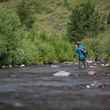








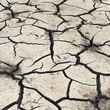
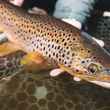



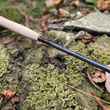
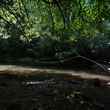



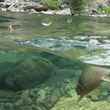




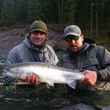

Comments